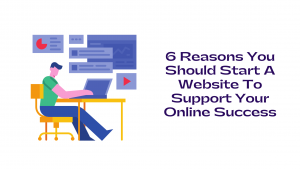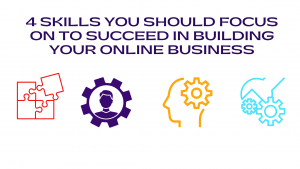If you are a marketer, then that makes you a writer.
These days there is no getting away from that fact – the two jobs go hand in hand and in order to be anywhere near effective at building and engaging an audience, you need to make sure that you understand how to write convincingly and how to grab attention.
This is especially true when it comes to your email marketing: a form of marketing that involves a lot of complex goals that are seemingly working contradictory to one another in many cases.
As an email marketers, you have been given privileged access to your subscribers’ inboxes. This is a huge gesture of trust and it demonstrates that your readers/visitors/customers must really enjoy your content and want to see more of it. They have given you their details because of that fact and because they want to get value from you.
So that is your first objective: to provide value without abusing that trust and without frustrating your subscribers.
At the same time though, you also need to fight to get your messages clicked. You need to make sure that your subject lines stand out among the other messages in their inbox and are interesting enough to be considered worth reading (while not looking like spam…).
Then you need to make sure that you are also able to persuade your audience and convince them to potentially buy from you, or to visit your site again, or simply to trust whatever it is that you’re saying.
Oh, and you need to write well as well. That means you need to write in a way that is captivating, entertaining, authoritative and accurate.
Over the rest of this report, you’re going to learn how to do all of those things.
How to Write Well
Is writing something that you can be taught?
Probably the best answer is a frustratingly non-committal ‘yes and no’. That is to say that it can be very hard to teach someone to write well if they have no natural ‘voice’ but in most cases, it will still be possible as long as they can grasp the basics and they have a decent command of English.
Problem is that this is going to take longer for some people than it is for others. And that means that in some cases, it will not be worth learning to write well from scratch. If you are someone that might be considered hopeless by your friends and contemporaries then it’s probably best just to hire a good writer.
Find a friend who speaks good English, get them to read a post you’ve written and then ask them to be completely 100% honest with you. If it’s terrible, then hire someone. If there’s hope, or you are a good writer, then continue and take on board some of these tips…
1. Writing Should be Efficient
The best place to start is by considering what the objective of good writing is. Writing is good if it manages to complete said objective, so what is it that you’re trying to do?
Usually, the most fundamental answer is that you want to impart meaning. You are trying to get your readers to understand something, to learn something or to think something and that all involves meaning.
In reality, nothing else really matters. And thus your objective should be to try and do this as quickly as possible and in as few words. Most of us are in a hurry these days and most of us have places we need to be. That means that we’re unlikely to have the patience to sit and dig through a massive paragraph of text and if your emails look like that, they’ll probably be ignored or binned.
Be respectful of your readers’ time then by getting them to understand the message you’re trying to convey as quickly as possible so that they are getting good ‘value’ for their time. The more value you impart in the fewer words, the more likely they’ll be to want to keep reading.
So, look through your writing and ask yourself which words are entirely necessary and which need to go. Anything that is superfluous – that does not serve a specific purpose – should go.
2. Vocabulary is Important
But this is not a ticket to write like a robot or to start writing in text speak! While your aim is efficiency, it is not necessarily brevity and there is still a place for flowery language and a large vocabulary.
Why?
Well, apart from the fact that it makes you sound clever – which in turn makes you more persuasive – using a larger vocabulary will actually help you to convey more meaning in fewer words. Why? Because you can choose words that provide a lot more value and ‘do more’.
Not only that, but by choosing the right turn of phrase, you can convey more than pure meaning and also start to evoke and emotional response from your readers or to provide additional details. This becomes very important when you’re trying to write in a manner that is persuasive and engaging because it allows you to better motivate your readers and therefore make them more likely to buy from you.
The best way to improve your vocabulary is just to read more. Likewise though, it can also pay to become better at description and emoting – so try to really picture and feel the emotions that you’re trying to convey and the way you want to depict them.
3. As is Tone
Also important is getting the right ‘tone’. This means that your message should be on-point in terms of how friendly it is versus how formal. If you are writing about insurance and your target audience consists of big important business people, then you will want to adopt a more formal tone than you would for an email list about football or your favorite band. Make sure that your content fits the intended purpose and the intended audience.
Again, this is where good vocabulary can come in – it’s a matter of being able to choose the words that will be most comfortable for the audience reading them. A great writer is someone that write for any audience and get the same kind of positive response.
Note as well that things like perfect grammar actually don’t matter all that much if you’re aiming to be more colloquial. That’s because the way that you write is secondary to the meaning that you’re trying to convey. As long as your audience understands you and they feel that you’re on their level, then you will have done well.
How to Write Copy That Gets Clicked and Read
If you can follow the advice shared in the last section, then you will be an efficient and accurate English writer. That means that no one is going to read your content and wonder if you’re English… or over 10 years old.
But that in itself won’t help you to sell or even to get your messages read. The best writer in the world is not necessarily going to be a good salesperson and it’s our job here to marry those two distinct skillsets.
So how do you make sure that your content gets opened in the first place? How do you keep your recipients reading right to the end?
1. Use Stories
One incredibly powerful tool is to use stories.
Stories are highly effective for a large number of reasons and sometimes storytelling is even referred to as ‘SEO for the human brain’.
The human brain has evolved over countless years and all of our different psychological quirks and ticks that we carry with us are a result of that evolution. Now consider that we have been telling stories for generations and recounting our experiences this way: this is why the human brain loves story telling.
That and we continue to hear stories whenever we watch TV, turn on the radio or read the news. Stories engage us because they send signs that tell us they are important and relevant. These are things that affect real people and so they may affect us? And because there’s that whole ‘beginning, middle and end’ thing, we will almost always feel naturally compelled to stick around with a story until we get to the end.
So, the question now is how you’re going to use storytelling in your emails. Usually, the answer is to write the very same stuff, but to do it in a way that is framed within your own personal experiences or those of a friend.
Instead of saying that ‘writing an ebook can make you rich’, explain how you got rich from an ebook and it changed your life. Which is most engaging and interesting?
2. Provide Value
The next tip is to provide value. This may seem obvious but actually it’s something that a lot of marketers struggle with because they aren’t 100% sure what value actually entails.
What is value? How can you measure it?
The thing that everyone (hopefully) knows that they must NOT do, is to send emails that are nothing more than adverts for products. If you do this, then you are not providing value but rather spam. Nearly everyone will ignore your messages and will likely hit unsubscribe because they won’t want to be pestered by you in the future.
But what’s also an example of not providing value is to write an email like ‘How to Get Six Pack Abs’ and then list three different types of exercise.
Why isn’t this value? Simple: because it is generic and because it is content that most of us have read countless times before on other sites. It’s unexciting, unoriginal and it doesn’t build your relationship or convey that you have any useful knowledge beyond what the reader already has.
Think about it: if they can get the same information by Googling, then why would they subscribe to your mailing list?
Suddenly, this can create a bit of a challenging situation for you because now you need to be continually coming up with content that is going to be completely original or so jam-packed with value that it blows anything else out of the water.
In other words? You can’t fake it. You need to be an expert in your field or someone with truly unique ideas or you need to hire someone that is.
Always ask yourself the following simple question for your value litmus test: would you read it? If the answer is no, then go back to the drawing board and come up with something more interesting!
3. Structure and Delivery
Finally, make sure that your content isn’t just read but is read all the way to the end. To do this, you’re going to need to fill it with things that are interesting and engaging but you’re also going to need to make sure it isn’t too long and that it is well spaced out.
That means lots of headings and lots of paragraphs. It means using bold titles and images and generally making sure that everything on the page is screaming for attention.
Think of this like arranging a shop window. A good store manager knows that if they have a ‘top seller’, then they need to stick it right in the window so that people passing by on the street will stop and take a closer look. Hopefully they’ll see other things they like along the way.
So, in a similar manner, this is what you’re trying to do with your emails. You need to make sure that if you are providing amazing value, you are also conveying that value throughout the course of your messages. You need to ensure that people who open your emails will see lots of things that catch their eye and be able to jump in straight to those points.
Do all this and you’ll drastically increase your chances of actually getting read. Of course, you then need to think about how you’re actually going to sell as well – but that’s a conversation for another time…



